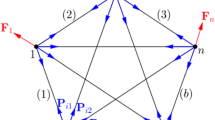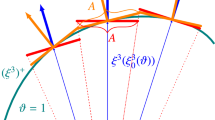Abstract
During the contraction of the ventricles, the ventricles interact with the atria as well as with the pericardium and the surrounding tissue in which the heart is embedded. The atria are stretched, and the atrioventricular plane moves toward the apex. The atrioventricular plane displacement (AVPD) is considered to be a major contributor to the ventricular function, and a reduced AVPD is strongly related to heart failure. At the same time, the epicardium slides almost frictionlessly on the pericardium with permanent contact. Although the interaction between the ventricles, the atria and the pericardium plays an important role for the deformation of the heart, this aspect is usually not considered in computational models. In this work, we present an electromechanical model of the heart, which takes into account the interaction between ventricles, pericardium and atria and allows to reproduce the AVPD. To solve the contact problem of epicardium and pericardium, a contact handling algorithm based on penalty formulation was developed, which ensures frictionless and permanent contact. Two simulations of the ventricular contraction were conducted, one with contact handling of pericardium and heart and one without. In the simulation with contact handling, the atria were stretched during the contraction of the ventricles, while, due to the permanent contact with the pericardium, their volume increased. In contrast to that, in the simulations without pericardium, the atria were also stretched, but the change in the atrial volume was much smaller. Furthermore, the pericardium reduced the radial contraction of the ventricles and at the same time increased the AVPD.











Similar content being viewed by others
References
Balay S, Brown J, Buschelman K, Gropp WD, Kaushik D, Knepley MG, Curfman McInnes L, Smith BF, Zhang H (2012) PETSc Web page. http://www.mcs.anl.gov/petsc
Bellini C, Di Martino ES, Federico S (2012) Mechanical behaviour of the human atria. Ann Biomed Eng 41(7):1478–1490
Belytschko T, Liu WK, Moran B et al (2000) Nonlinear finite elements for continua and structures. Wiley, New York
Carlsson M, Ugander M, Mosén H, Buhre T, Arheden H (2007) Atrioventricular plane displacement is the major contributor to left ventricular pumping in healthy adults, athletes, and patients with dilated cardiomyopathy. Am J Physiol Heart Circ Physiol 292(3):1452–1459
Di Martino ES, Bellini C, Schwartzman DS (2011) In vivo porcine left atrial wall stress: computational model. J Biomech 44(15):2589–2594
Emilsson K, Brudin L, Wandt B (2001) The mode of left ventricular pumping: is there an outer contour change in addition to the atrioventricular plane displacement? Clin Physiol 21(4):437–446
Freeman GL, Little WC (1986) Comparison of in situ and in vitro studies of pericardial pressure-volume relation in dogs. Am J Physiol Heart Circ Physiol 251(2):H421–H427
Guccione J, Costa K, McCulloch A (1995) Finite element stress analysis of left ventricular mechanics in the beating dog heart. J Biomech 28(10):1167–1177
Gurev V, Lee T, Constantino J, Arevalo H, Trayanova NA (2011) Models of cardiac electromechanics based on individual hearts imaging data. Biomech Model Mechanobiol 10(3):295–306
Hodgkin AL, Huxley AF (1952) A quantitative description of membrane current and its application to conduction and excitation in nerve. J Physiol 117(4):500–544
Holt JP (1970) The normal pericardium. Am J Cardiol 26(5):455–465
Keller DUJ, Kalayciyan R, Dössel O, Seemann G (2010) Fast creation of endocardial stimulation profiles for the realistic simulation of body surface ECGs. In: IFMBE proceedings world congress on medical physics and biomedical engineering, 25(4). Springer, Berlin, pp 145–148
Kerckhoffs RCP, McCulloch AD, Omens JH, Mulligan LJ (2007) Effect of pacing site and infarct location on regional mechanics and global hemodynamics in a model based study of heart failure. In: Sachse FB, Seemann G (eds) Functional imaging and modeling of the heart. Springer, Berlin, pp 350–360
Krishnamurthy A, Villongco CT, Chuang J, Frank LR, Nigam V, Belezzuoli E, Stark P, Krummen DE, Narayan S, Omens JH, McCulloch AD, Kerckhoffs RCP (2012) Patient-specific models of cardiac biomechanics. J Comput Phys. doi:10.1016/j.jcp.2012.09.015
Krueger M, Schmidt V, Tobón C, Weber F, Lorenz C, Keller D, Barschdorf H, Burdumy M, Neher P, Plank G et al (2011) Modeling atrial fiber orientation in patient-specific geometries: a semi-automatic rule-based approach. Funct Imaging Model Heart 6666:223–232
Lee JM, Boughner DR (1985) Mechanical properties of human pericardium. Differences in viscoelastic response when compared with canine pericardium. Circ Res 57(3):475–481
LeGrice IJ, Takayama Y, Covell JW (1995) Transverse shear along myocardial cleavage planes provides a mechanism for normal systolic wall thickening. Circ Res 77(1):182–193
Mantovani F, Barbieri A, Modena MG (2011) Congenital complete absence of the pericardium: a multimodality imaging diagnostic approach. Echocardiogr J 28(1):E21–E22
Marchesseau S, Delingette H, Sermesant M, Ayache N (2013) Fast parameter calibration of a cardiac electromechanical model from medical images based on the unscented transform. Biomech Model Mechanobiol, 12(4):815–831
Martini FH, Timmons MJ, Tallitsch RB (2011) Human anatomy. Pearson Education, publishing as Pearson Benjamin Cummings, Upper Saddle River
Omens JH, MacKenna DA, McCulloch AD (1993) Measurement of strain and analysis of stress in resting rat left ventricular myocardium. J Biomech 26(6):665–676
Psychidis-Papakyritsis P, de Roos A, Kroft LJM (2007) Functional mri of congenital absence of the pericardium. Am J Roentgenol 189(6):W312–W314
Sachse FB, Glänzel KG, Seemann G (2003) Modeling of protein interactions involved in cardiac tension development. IJBC 13(12):3561–3578
Sato T, Tsujino I, Oyama-Manabe N, Ohira H, Ito Y, Yamada A, Ikeda D, Watanabe T, Nishimura M (2012) Right atrial volume and phasic function in pulmonary hypertension. Int J Cardiol. doi:10.1016/j.ijcard.2012.09.133
Seemann G, Sachse F, Karl M, Weiss D, Heuveline V, Dössel O (2010) Framework for modular, flexible and efficient solving the cardiac bidomain equations using PETSc. Prog Ind Math ECMI 2008 15:363–369
Sherwood L (2007) Human physiology: from cells to systems. Thomson-Brooks/Cole, Belmont
Stergiopulos N, Westerhof BE, Westerhof N (1999) Total arterial inertance as the fourth element of the windkessel model. Am J Physiol Heart Circ Physiol 276(1):H81–H88
Streeter D (1979) Gross morphology and fiber geometry of the heart. In: Bethesda B (ed) Handbook of Physiology: the Cardiovascular System, vol 1, American Physiology Society, p 61–112
ten Tusscher K, Noble D, Noble P, Panfilov A (2004) A model for human ventricular tissue. Am J Physiol Heart Circ Physiol 286(4):1573–1589
Topilsky Y, Tabatabaei N, Freeman WK, Saleh H, Villarraga H, Mulvagh SL (2010) Pendulum heart in congenital absence of the pericardium. Circulation 121(10):1272–1274
Tyberg JV, Taichman GC, Smith ER, Douglas NW, Smiseth OA, Keon WJ (1986) The relationship between pericardial pressure and right atrial pressure: an intraoperative study. Circulation 73(3):428–432
Watkins MW, LeWinter MM (1993) Physiologic role of the normal pericardium. Annu Rev Med 44(1):171–180
Westerhof N, Elzinga GIJS, Sipkema P (1971) An artificial arterial system for pumping hearts. J Appl Physiol 31(5):776–781
Willenheimer R, Cline C, Erhardt L, Israelsson B (1997) Left ventricular atrioventricular plane displacement: an echocardiographic technique for rapid assessment of prognosis in heart failure. Heart 78(3):230–236
Wriggers P (2006) Computational contact mechanics. Springer, Berlin
Acknowledgments
We acknowledge the support of the KIT competence field Mathematical Models in form of a start-up grant.
Author information
Authors and Affiliations
Corresponding author
Electronic supplementary material
Below is the link to the electronic supplementary material.
Supplementary material 1 (mpg 4788 KB)
Rights and permissions
About this article
Cite this article
Fritz, T., Wieners, C., Seemann, G. et al. Simulation of the contraction of the ventricles in a human heart model including atria and pericardium. Biomech Model Mechanobiol 13, 627–641 (2014). https://doi.org/10.1007/s10237-013-0523-y
Received:
Accepted:
Published:
Issue Date:
DOI: https://doi.org/10.1007/s10237-013-0523-y




